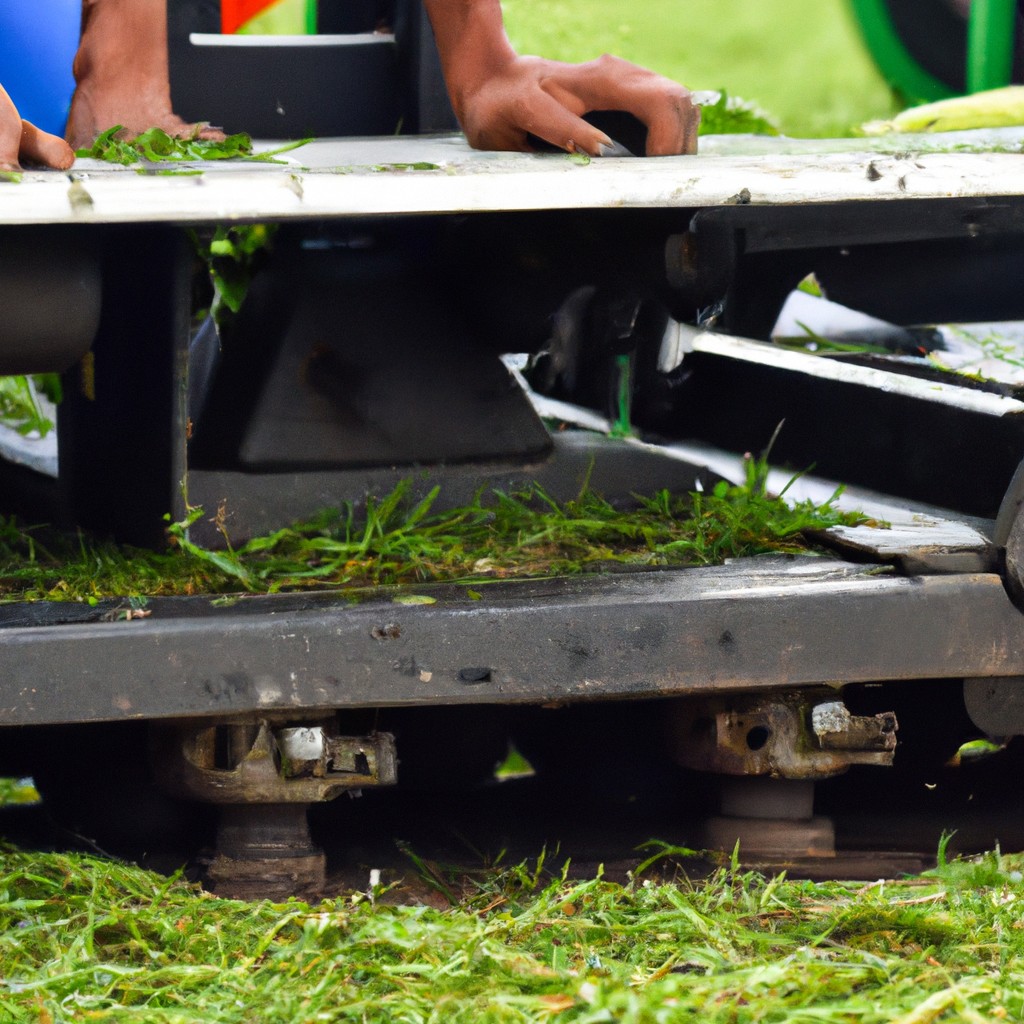Exploring the costs associated with precision agriculture can provide valuable insights into this sustainable farming approach.
The cost of precision agriculture, a practice that utilizes advanced technology to enhance crop health and productivity, varies significantly depending on the size of the farm, the type of technology implemented, and the level of precision desired.
While initial setup costs can range from $5,000 to $20,000 for hardware and software, ongoing expenses for subscriptions, updates, and maintenance can add several thousand dollars more annually.
But don’t let these figures deter you. Investing in precision agriculture can lead to substantial savings in the long run by optimizing resource use and maximizing crop yields.
This article will delve deeper into the specific costs associated with different precision agriculture technologies and how they can be a game-changer for sustainable and regenerative farming.
Key takeaways:
- Precision agriculture costs vary based on farm size, technology, and precision level.
- Initial setup costs range from ,000 to ,000.
- Ongoing expenses for subscriptions, updates, and maintenance can add thousands of dollars annually.
- Training staff is an important investment for successful implementation.
- Return on investment (ROI) is possible through efficiency gains and yield improvements.
Look Inside:
Initial Investment in Precision Farming Equipment

Primarily, there’s the expenditure on hardware, such as GPS equipment, yield monitors, and automated steering systems. For instance, a standard GPS receiver costs around $1,000 to $3,000, while fully automated guidance systems can range upwards to $25,000. Yield monitors, pivotal in creating yield maps, could set you back somewhere between $3,000 and $5,000.
Moreover, the cost will also be influenced by choice of software and the level of accuracy required, which directly impacts the hardware price. The data management software usually comes in a package with the hardware and prices vary significantly depending on the sophistication and capabilities of the system.
Ongoing Maintenance Costs in Precision Agriculture
Maintenance plays an integral part in keeping precision agriculture technology in optimal condition. Often, this obligation includes regular software updates, repair of hardware, potential replacements, and system optimization.
On average, these expenses can add up to $1,000 to $3,000 per year. These costs also incorporate technical support services necessary to troubleshoot any issues that may arise.
Factoring such ongoing expenses into the total cost consideration provides a more accurate financial picture over the lifetime of precision farming equipment.
Analysis of Networking and Connectivity Costs in Precision Agriculture
Reliable interconnected systems are integral to effective data gathering, data processing, and remote equipment control. At the heart of precision agriculture, robust networking infrastructure plays a pivotal role.
Standard technologies like GPS for geographic positioning and Wi-Fi for local data transfer can incur costs as high as $1,000 to $5,000 per installation. Connectivity subscriptions, such as cloud computing services and satellite data, can further increase annual expenditures by $500 to $1,000.
Additionally, factoring in areas with poor connectivity that may necessitate investment in private networks can add extra financial strain to farmers. It is important to consider these connectivity-related expenses in relation to the substantial efficiency gains they facilitate.
Implication of Training Staff for Effective Precision Agriculture
A significant part of the precision agriculture journey resides in ensuring your staff is adequately equipped to use the advanced technology effectively. Skilled operation of these complex tools takes time and training, which can initially add to the overall expenditure. This usually involves hiring a certified precision technology trainer or allocating funds for online courses which could range from $200 to $500 per person.
While this additional cost may seem unnecessary, consider it an investment in your farm’s future. Well-trained staff can manage crop health and improve productivity, acting as the backbone of efficient precision agriculture. They can make the most of technology, effectively reducing waste and expenditure on resources in the long term. Even with the initial training outlay, the benefits of upskilled staff make an impressive case for this investment. So, understanding its implication and integrating it into your precision farming budget could indeed ease your path towards sustainable and regenerative farming.
Assessing ROI for Precision Farming
Estimating the return on investment (ROI) for precision farming takes into account two key factors: efficiency gains and yield improvements.
Efficiency gains, referring to lower costs through optimized resource usage, can result in reduced expenditures on water, pesticides, and fertilizers.
This aids in decreasing both financial costs and environmental impact.
On the other hand, yield improvements refer to the augmented productivity resulting from precise field monitoring and treatment.
With the ability to treat individual sections of a field according to the specific needs, it is possible to significantly improve yields while maintaining or even decreasing input levels.
These efficiency and yield improvements can often offset the high initial and ongoing costs of precision farming technology, demonstrated through positive ROI.
However, it is crucial to bear in mind that ROI will vary depending on the type of technology used and the specific circumstances of each farm.
Quantifiable improvements in sustainability, though harder to measure than direct financial returns, are another valuable aspect of the ROI equation.
Exploring Advanced Land Management Tools and Their Costs
Geospatial technology is increasingly becoming a cornerstone of precision farming. Geographic Information Systems (GIS) and Global Positioning Systems (GPS) can help farmers monitor and manage their land more efficiently.
GIS tools, which can map soil conditions and monitor crop health, range from $2,000 to $4,000. A comprehensive GPS system that assists with navigation and mapping can cost anywhere between $1,000 and $5,000.
Moreover, drones, used for aerial imagery and crop scouting, range in price from $1,500 to $10,000, depending on their capacity and features. Software for analyzing drone-acquired data typically has an annual fee of $1,000.
Finally, advanced sensors are used to monitor field conditions, such as soil moisture and nutrient levels. These vary significantly in price, from $100 per sensor to upwards of a few thousand dollars for comprehensive soil monitoring systems including network connectivity and data analytics. This investment allows farmers to implement real-time solutions, enhancing productivity and conserving resources.
Discussing Private Wireless Costs for Precision Agriculture
Private wireless networks often come into the picture due to the large data demands of various precision farming technologies. These networks ensure that farm data is transferred seamlessly and instantaneously across large farm areas.
Setting up a reliable private wireless network for farm operations can cost between $1,000 to $5,000, depending on range and capacity. This is a one-time installation cost, with additional minimal expenses incurred for network maintenance and upgrades.
The adoption of private wireless networks significantly improves the efficiency of data collection, thus enabling farmers to make informed decisions about resource allocation precisely and promptly. This helps maximize productivity while minimizing waste, bolstering the overall viability of precision agriculture practices.
Despite the initial capital outlay, the direct benefits farmers gain from data-driven decision making often cover the costs in the long-term, substantiating the worthiness of this investment.
FAQ
How much does precision agriculture save cost?
Precision agriculture, through the use of yield mapping with GPS, can save farmers more than $25 per acre, while soil mapping with GPS can save slightly over $13 per acre.
Is precision agriculture worth it?
Yes, precision agriculture is worth it as it can lead to significant water conservation up to 21% and also allows farmers to spend less time in the field due to its efficient monitoring system.
Is precision farming profitable?
Precision farming, through the utilization of technology like soil and yield maps, automated guidance systems, and variable input applications, can lead to a modest increase in net returns as much as 2%.
How much does smart farming cost?
The upfront cost of implementing smart farming via a private wireless network is approximately $50,000 per farm, with an estimated annual recurring cost of about $6,000.
What are the initial investment requirements for precision farming?
The initial investment requirements for precision farming include purchasing advanced equipment such as drones, GPS systems and sensors, alongside investing in data analysis software, technological training, and potentially hiring additional skilled personnel.
How does the cost efficiency of precision agriculture compare to traditional farming methods?
Precision agriculture generally offers higher cost efficiency than traditional farming methods by optimizing inputs, reducing waste, and improving crop yields.
What are the potential financial benefits of adopting smart farming technologies?
The adoption of smart farming technologies can lead to significant financial benefits through increased crop yield, improved quality, reduction in operational costs and more efficient use of resources.




